Paper Doll
Smead, Secrets for Organizing a Small Business, and the New TV Season
Long before Paper Doll became a professional organizer, I was a television character. No, not a character on television, but one whose personality and intellect was lovingly devoted to TV.
Not only was my first career as a television program director (for Fox, UPN and WB stations), but my life was guided by the broadcast schedule. (Yes, kids, in the olden days, all television was available only via broadcast, and you watched it while it was airing, not when it was convenient for you. Pretty disorganized, eh?)
– National Archives and Records Administration
In recent years, I’ve had some fun appearing on the modern version of television — online video — from short tips and product testimonials for Rubbermaid and Smead to longer video interviews, like this year’s Delegate Like a Boss. (I’ve even had some forays into audio, participating in various teleseminar series like Declutter Your Life, talking about eliminating paper clutter, and radio interviews like WGOW-FM’s Chewin’ the Chatt (start at about 3:15), on organizing strategies for senior citizens.
But this summer, I had an especially fun time talking with John Hunt on episode #41 of Smead’s Keeping You Organized podcast. We talked about the “secrets” to organizing a small business, focusing on paper management and information flow, and I even got to promote my recently published book, 57 Secrets for Organizing Your Small Business.
There was no fancy green room and no celebrities for me to make room for on the couch, but it was a lively discussion about a topic near and dear to my heart, organizing all that important stuff so you can think about that information contextually instead of just trying to think of it, so it doesn’t fall out of your head.
[There’s an audio-only option for those of you who — like I — get a bit distracted by the close-up editing and my humidity-inspired Art Garfunkel hair.]
I was thrilled to be part of the first season of the Keeping You Organized podcasts, but like any true television aficionado, I’m also excited about the new season. As a TV person, that means combing the TV Guide Fall 2014 Schedule to figure out what I’ll be watching each night. And as a professional organizer, it means I’ll be waiting for this week’s launch of the second season of Keeping You Organized.
Until then, I invite you all to catch up on the first season highlights with professional organizing All-Stars like Geralin Thomas, Ramona Creel, Leslie Josel, Ellen Delap, Deb Lee, and more.
Welcome to September! New school year, new TV season, new opportunities for Keeping You Organized. Happy new year, Paper Doll readers!
Organize Your Reading: A Customized Digital Newspaper…That’s Actually Paper!
Are you a reader? Organizing the form of information flow can be just as important as squaring away the content.
Previously, we’ve discussed how handwritten notetaking correlates better with learning and improved cognition than typewritten notes. Also, a recent Scientific American piece, The Reading Brain in the Digital Age: The Science of Paper versus Screens, reviewed the current research. It found that there was at least some indication that “by limiting the way people navigate texts, screens impair comprehension” and that “screens and e-readers interfere with two other important aspects of navigating texts: serendipity and a sense of control.”
Leaving behind the science of the matter, sometimes, you just want to read things on paper. Perhaps you want to scribble something in the margin, or highlight it, or circle a portion, or post it on your mirror for inspiration or your office door to make a statement. You want to clip it out and paste it on your high school locker door, or dorm room bulletin board, or office cubical half-wall. You want to share it with your great-grandma.
But GamGam may not want to log in to Facebook or Tumblr. And you can’t post your iPad on your mirror or your door, and even if you could, some goofball would come along and change the screen. The web is great, and there’s amazing stuff out there just waiting to be absorbed. But…sometimes…paper is ineffably better.
However, as you probably know from experience, indiscriminately printing things from the web is generally a no-go. Sure, you can print directions or a recipe, but usually you end up with excess: ads, navigation links and junk; you use up the color ink disproportionately to how much you care for the things that print in color. And yes, previously, we’ve talked about options to make your online reading simplified, and that can help reduce the waste of ink and paper. But, sigh, sometimes, we miss newspapers.
The UK company Newspaper Club, which helps consumers design and print their own newspapers, has come up with an innovative approach for just such moments. They call it Paper Later. (Not to be confused with the creativity app Paper. Or Facebook’s app called Paper.)
At first glance, Paper Later works similarly to other ‘read it later’ services like Instapaper, Pocket, Flipboard or Readability. As you’re reading along, click the “Save for Paper Later” button in your browser while you’re standing in line at the grocery store or waiting for the dental hygienist. Whatever you’re reading, click on your phone or tablet and select those really good bits of the web, particularly what’s come to be known as “longreads” from stellar sources like the eponymously named Longreads, Medium, Hazlitt (Canadian and oh-so-cool), ProPublica (for public interest journalism) or The Classical (for sports fans).
But instead of coming back and reading them on the web, you get to read them on paper. Real paper. And not like printing a PDF on your printer, but in a newspaper. So, click to save, and when you have enough articles, hit “print” and Paper Later will lay your newspaper out, print it and ship it to you, and it should be delivered within 3-5 working days. It’ll come in a card-backed envelope and should fit in a standard mailbox or through a standard letter slot.
You can save anything from the web, but articles and blog posts work best. Obviously, this is not for saving and printing hot news stories. It’s not for reading quickly and tweeting out to your followers. It’s designed to let you take the more thoughtful approach, to read on a long train or airplane ride, or while you’re enjoying those last few sunny, crisp days in the hammock. Pick stories that are a little closer to timeless — or at least those which will have meaning to you once you’ve collected enough to read.
Paper Later is printed on 55gsm newsprint, with a high recycled content. It’s FSC– and PEFC-certified, and sourced from Swedish forests (because apparently those Swedes grow the best newspaper trees). I was curious about the length of a typical customized Paper Later edition, and got a quick reply:
@ProfOrganizer you can order anything from 8-24pp, and many people hit the maximum, which works out to be 30-40k words, typically.
— PaperLater (@paperlaterhq) August 18, 2014
Paper Later reports that the end-result looks and feels like a traditional newspaper, but is a tad thicker than typical newspaper, and is thus less likely to tear.
Unlike the Little Printer, which (even with its recent advances) I still think is mainly good for a lark, I can envision a number of reasons why you might want to invest in a subscription to Paper Later.
- You love the experience of reading the paper, but find your daily newspaper mostly pointless because you’ve read it all on Twitter already.
- Paper is less distracting than digital. With Paper Later, there’s no advertising (which makes it better than a traditional newspaper). And you don’t have to worry about tilt-lock, or losing wi-fi, or dropping it on concrete.
- You’ve been trying to learn a new language, but digital just isn’t conducive for you to unravel the nuances of longer pieces. With your Paper Later in one hand and your favorite whatever-to-English dictionary (digital or otherwise) in the other, you can explore.
- Artistically archiving a project appeals to you. An expectant couple might be blogging about preparations for the baby-to-be, and a newspaper archive of those posts provides a touching and tangible record.
- You want to curate fabulous pieces of writing for a loved one who is not digitally adept. Great-Grandpa’s brain is still sharp, but perhaps his hands aren’t so steady, and a tablet or keyboard just doesn’t work for him. A newspaper filled with writing that satisfies his intellect might be just the ticket.
Unfortunately, Paper Later is only available in the UK for now, so only Paper Doll readers on the other side of the Atlantic, like Jacki Hollywood Brown (Canadian professional organizer and blogger on extended stay in England), can report in on how well it works, but there’s an option to write in to let them know you’d like Paper Later to expand to your locale.
At £4.99 (about US $8.28) per issue, it’s a small indulgence. Much like taking quiet time, sitting in a hammock and catching up on your reading.
Paper Doll’s Campus Tour: Organize Your College Life
Paper Doll is old enough to remember the excitement that the August back-to-school issue of Seventeen Magazine would bring. I especially loved the articles about preparing for college.
Long before I was ready to go to college, I couldn’t wait to get organized to go to college. And by the summer between graduation and going off to school, it seemed like Paper Mommy and I comparison-shopped every possible dorm room item, as if we were setting up a color-coordinated magazine spread for Dorm Room Beautiful!
Over the years, I’ve offered a lot of advice about preparing for college. Elsewhere on my site, I’ve written articles like Organizing Your College Search and Application Process and Organize Your Dorm Room. A search of the Paper Doll blog for the tag “Notes and Notebooks” examines options for the right note-taking solutions and resources, and the blog covered Textbook Rentals: How to Avoid College Textbook Clutter as early as 2009, and then in again in 2010, and looked at 11 Tips for Beating the High Cost of Textbooks in 2012.
Today’s entry offers up some of Paper Doll‘s favorite items and venues for organizing college life.
QUIRKY
Pivot Power — this flexible power strip and surge protector from Quirky comes in a few versions: junior, with three outlets, as well as six-outlet versions in traditional black, white with blue, and various colors in the POP line. This full-sized pink POP Pivot (say that three times fast!) runs about $20.
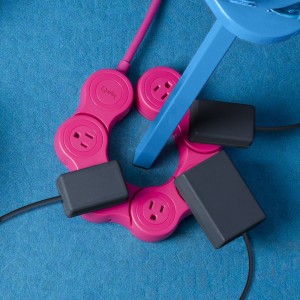 Bend the Pivot to accommodate hairpin dorm room turns, large chargers and inconveniently-placed furniture.
Bend the Pivot to accommodate hairpin dorm room turns, large chargers and inconveniently-placed furniture.
SMEAD CAMPUS.ORG
We’ve already talked about the Vertical Step Index Expanding File and the
Organized Up™ Vertical Stadium File when we looked at NAPO2014: Our Friends at Smead Are on the Up and Up!, and we’ve covered the Organized Up™ folders, which have dual tabs for easy storage in backbacks and when traditionally filed. But be sure to check out other backpack-friendly vertical school supplies in that same line. I’m particularly fond of poly folders, as they won’t rip or get wrinkled with overuse, and seem like a step up from the paper subject folders prevalent in middle and high school.
For example, there’s the Poly Backpack Folder.
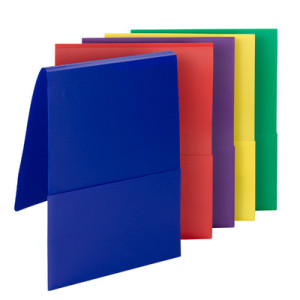 These upright folders are designed to hold one subject at a time, and the fold-over flap keeps your syllabus and handouts secure. The flap is straight-cut, so it can be tucked or untucked (like college shirts after the Freshman Fifteen take hold) and each Poly Backpack folder will hold up to 100 sheets and run about $1.29 at Amazon and elsewhere.
These upright folders are designed to hold one subject at a time, and the fold-over flap keeps your syllabus and handouts secure. The flap is straight-cut, so it can be tucked or untucked (like college shirts after the Freshman Fifteen take hold) and each Poly Backpack folder will hold up to 100 sheets and run about $1.29 at Amazon and elsewhere.
Smead’s Campus.org line also includes the similar Poly Backpack Organizer. Each of the three pockets will hold up to 50 sheets. (For those who are still fond of paper over poly, both products are available in 11-point textured paper stock, as well as poly.) You can find the organizers for about $5 each.
CAMPUS CANDY
Paper Doll perennial faves Office Candy have a whole line for fashionable college students to get their organizational groove on. Collegiate-themed Campus Candy has the same philosophy as its older sibling — if your organizing resources are appealing, you’ll be more likely to use them to keep yourself orderly.
From Kate Spade storage boxes ($52 for a set of three sturdy, patterned boxes with gold foil accents and gold foil ID labels)
to a plethora of Lily Pulitzer agendas, spiral notebooks, water bottles, desk sets and more, Campus Candy offers decorative sweets.
BATTLE OF THE BACKPACKS
I’ll admit, in my day, when dinosaurs roamed the campus, backpacks were pretty basic. One large interior pocket, one smaller, zipped exterior pocket, and if you were lucky, padded straps. As far as I can recall, bottle water (let alone mesh pockets for water bottles) wasn’t even a thing yet. Now, students have an embarrassment of stuff-schlepping riches from which to choose.
Cocoon Innovations, makers of the Grid-It! (in all of its various incarnations), has always been a Paper Doll all-star. I think college-bound students should be considering a variety of Grid-It! resources, from the standard Grid-It! Organizers (Medium shown here, 10 1/2″ x 7 1/2″, $18, available in red, blue and black)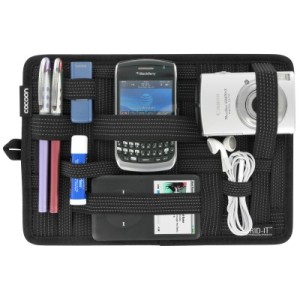
to the Grid-It! Wraps for tablets (in black, grey and red) for $30.
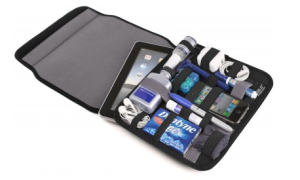 But the backpacks have taken the game up a notch — and while the Central Park Professional Backpack (designed to hold a 17″ laptop) is definitely practical and stylish, the Cocoon Slim Backpack (able to hold up to a 15″ MacBook Pro) has everything a college student might need to make it from breakfast to bedtime without a moment’s clutter kerfuffle.
But the backpacks have taken the game up a notch — and while the Central Park Professional Backpack (designed to hold a 17″ laptop) is definitely practical and stylish, the Cocoon Slim Backpack (able to hold up to a 15″ MacBook Pro) has everything a college student might need to make it from breakfast to bedtime without a moment’s clutter kerfuffle.
The slim has a padded compartment for a laptop as well as a separate iPad compartment, and a built-in 16″ x 10 1/2″ GRID-IT! front pocket. There’s an interior document section, and an exterior zippered compartment for more storage. The whole interior is lined in faux suede to buffer the high-tech gadgets, and the exterior features water-resistant ballistic nylon, waterproof zippers, and gun-metal hardware. Ridiculously organized and durable, but also sleek, when fully packed, it’s still only 3 1/2″ deep:
And it’s only $79! I’d always thought that if I were going back to college, I couldn’t find anything more perfect for me than my Züca bag combined with a Grid-It for all my chargers and gadgets, but the Slim is mighty tempting.
Of course, if you (or your college-bound student) want a similarly lean alternative but with a little more minimalist cachet, the Evernote-branded, French-designed Côte & Ciel Flat Backpack may fit the bill. The high performance, dark grey EcoYarn exterior is tough but attractive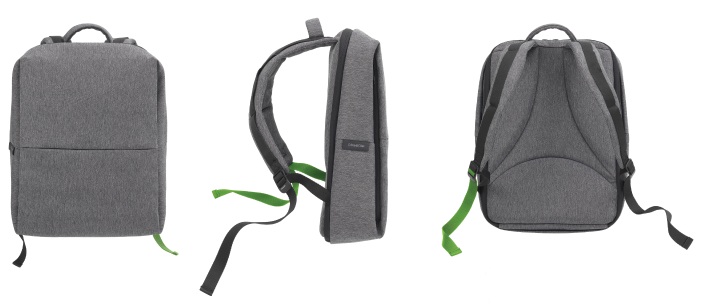 in that oh-so-Old-World, “Oh, this old thing?” manner, and the three interior pouches will accommodate a 13″ or 15″ laptop, a tablet and stacks of papers, all in under 4″ of depth. The price, however, is a not-so-slender $180!
in that oh-so-Old-World, “Oh, this old thing?” manner, and the three interior pouches will accommodate a 13″ or 15″ laptop, a tablet and stacks of papers, all in under 4″ of depth. The price, however, is a not-so-slender $180!
RISE UP FOR SWEET DREAMS AND LATE NIGHT STUDYING
Most college students can adequately outfit themselves for campus survival without ever leaving their nearest Big Box store plaza. For example, Power Bed Risers, like these from Bed, Bath and Beyond, serve two purposes: superior storage and increased available outlets.
A set for four, for $30, raises a dorm room bed 7″ from the floor, allowing for more ample storage of lidded tubs (for extra supplies and off-season clothing) without cluttering the room. Additionally, one riser in each set includes twin 110-volt, 15-amp grounded power outlets and twin USB 5-volt DC outlets with a charging light, so you can make sure everything from phones to Fitbits, iPads to (probably still contraband) toaster ovens will be ready when the need arises.
BACK TO BASICS
Finally, there’s something to be said for the basics. College students have put milk crates to use as bookshelves, open armoires for clothing, fridge-top food storage, filing boxes, chairs, dining tables and more for about half a century.
Nowadays, they’re designed primarily for files, not wholesome dairy products, and have hanging file rails running along the interior in both directions to corral letter- or legal-sized files.
For between $4 and $6 each at Walmart, Target or Staples, you can grab two or three plastic milk crates in mix-and-match colors, pack and stack them with minimal fuss and cost, and maximize the organization in your postage stamp-sized castle. It’s academic.
And by the way, Seventeen Magazine is still offering advice on what to bring to college.
Magnetic Attraction Deferred: The MAGNOTE Notebook
When you think about using magnets to get organized, is the first thing that comes to your mind something like a dental appointment card stuck to the refrigerator with a novelty magnet? Me, too.
So I was surprised recently to hear about a Kickstarter campaign for a magnetic option for organizing handwritten materials.
THE MAGNOTE
The MAGNOTE Magnetic Notebook, from Orange Monkie, takes a page (pardon the pun) out of the playbook for tablet/keyboard combinations like the Surface and my newly beloved iPad + Logitech wireless keyboard set-up. Magnets hold things together — at least until you want to pull them apart. The MAGNOTE applies the same principle to keeping your paper notebooks together.
The neodymium magnets sound like something out of Star Trek, but have a nifty, streamlined appeal. If you’ve never used a bluetooth tablet keyboard/cover, it’s hard to explain the giddiness you experience with that first tidy, joyous click into place, but this image may indicate how cool it is.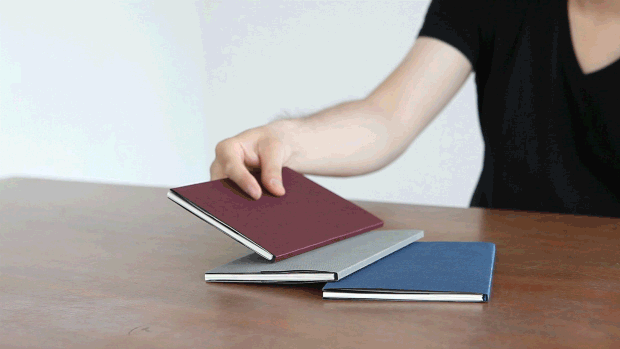
Keeping the notebooks you need (for the day, for a study session, etc.) all together without a giant elastic or a backpack is pretty cool, and, as this fun little video indicates, keeping your notebook visible yet out of the way is as easy as tossing it in the direction of your fridge or metal dorm room door!
However, to be honest, the magnets aren’t even the most interesting thing about MAGNOTE. But let’s start with the basics.
THE DESIGN
At 5.3″ wide by 7.7″ high, the MAGNOTE notebooks can be held in one hand.
Each notebook has a bound cover that lays flat when open without risking the structural integrity of the spine. So, if you want to draw or write across the center dividing line of two pages, you can do so with confidence.
The planned paper stock is fountain-pen friendly, which is a boon for many of the types of users who prefer fancy Moleskine-like notebooks over composition books and legal pads.
THE TIME CIRCLE and LINE-LESS MONTHS
MAGNOTE’s minimalist approach is especially intriguing when you look at the daily planner style. Rather than traditional hour-by-hour lined grids stacking up the hours of the day like so much firewood, the MAGNOTE envisions daily life centered around an analog clockface.
Each daily planner page has one simple circle with the day of the month in the middle. It all starts with the premise of the Time Circle, allowing for more free-flowing visualization of the high-, medium- and low-activity zones in the day. You’ll want to look at the Kickstarter page to get an in-depth sense of how these times blend together to get one twenty-four hour plan for a twelve-hour clock, but you can see, below, how chunks of dayparts can be assigned.
To plan your own day, you work your way around the circle, with mind-map style lines out from the hours of the day to when you’ve scheduled fixed appointments and planned work blocks. (Well, not blocks. They’re more like floating clouds.) The bottom of the page provides ample room for notes.
Paper Doll is a little too linear to use the Time Circle comfortably, but for those who don’t see their day like layered stacks, this might provide some fresh air for time management and planning.
The monthly planner is equally minimalist. There aren’t even boxes or squares to indicate days. Alternating weeks are slightly shaded, to provide contrast, the months are numbered and not even named, and each day has the date noted.
Otherwise, the calendar page is left for the user to design, adding details and grouping projects by parts of the week or days of the month. You can definitely imagine some people adding serious color-coding to get the look that works for them.
BOXING IT UP
Orange Monkie’s original plan was for five colors, each representing one style of the MAGNOTE notebook.
Going left to right, the colors and styles of each 64-page notebook were envisioned as follows:
- Red: MagPlanner Monthly (two-year planner)
- Burgundy: MagPlanner Daily (two-month planner)
- Grey: Magnote Plain (plain pages, front-and-back, suitable for sketching, mind-mapping, free-form note-taking and any visual creativity you have in mind)
- Blue: Magnote Ruled (lined pages, with lines falling every 8mm)
- Brown: Magnote Grid (graphed pages, suitable for scale drawing, room design or math problems)
The whole kit and caboodle (sets of multiple notebooks, in whatever colors are preferred) fits in a diagonally-cut box cover, so you can display your notebooks (or not) tidily.
See it in motion:
The Kickstarter campaign’s initial pricing was set as:
- Early Bird pricing: any four notebooks/planners of the five for $39 (limited to the first 250 funders)
- Notebooks sets (Plain, Ruled, Grid), select 3/$29, 6/$47 or 10/$72
- Planner sets (planners or notebooks), select 4/$43, 6/$59 or 10/$88
The price, which initially seemed high, doesn’t compare unfavorably with the cost of Field Notes and soft-cover Moleskines, for those with a more refined notebook palate. But committing to the MAGNOTE would mean settling for only one size of notebook, which may be a deal-breaker for some users, no matter how magnetic the attraction.
MAGNETS ATTRACT, MANUFACTURING DISSATISFACTION REPELS
When I started researching this post, the Kickstarter Project for MAGNOTE had already reached 80% of its funding goal in under a week. Eventually, it hit $33,804 of a $35,000 funding goal — it was there, baby! But then, early last month, something funny happened. Orange Monkie wasn’t satisfied enough with the manufacturing process quality, did more research, and found a better company for mass production, one that would allow for even more exciting features, like refillable notebooks!
While this change of direction is a positive thing, doing it mid-Kickstarter meant they’d have to change the backer rewards, and redesigning the prototype for new options meant delaying the estimated delivery date. I think it took a lot of moxie for Orange Monkie to halt an almost fully funded campaign to basically say, “Wait, we trust our product, and we want you to trust it, so let’s drop this campaign, and we’ll meet you back here for a relaunch when we’re shiny and new!”
So, although it’s rare that I share a product that’s not-ready-for-Prime-Time, I encourage you to keep an eye on this concept. Until then, you can review some favorite Paper Doll posts to help you find your ideal notebook:
- 5 Key Points for Organizing With Notebooks
- Notions on Notebooks: Organize Your Paper Picks
- Paper Doll Writes Between the Raindrops: Waterproof Notebooks
- An Organized Hybrid: The Evernote Smart Notebook By Moleskine
- Organize Your Writing Right — With Left-Handed Notebooks
- Customizable Notebooks: Have It Your Way…Sorta
- It’s a Notebook! It’s a Whiteboard!: 3 Dry-Erase Notebook Innovations
- From Paper to the Cloud: Ampad Shot Note
- NAPO2014: Notetaking and Pendaflex/TOPS’ FocusNotes™
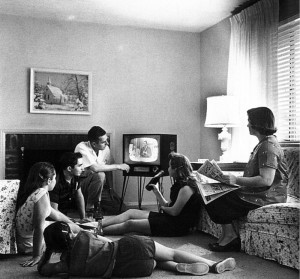


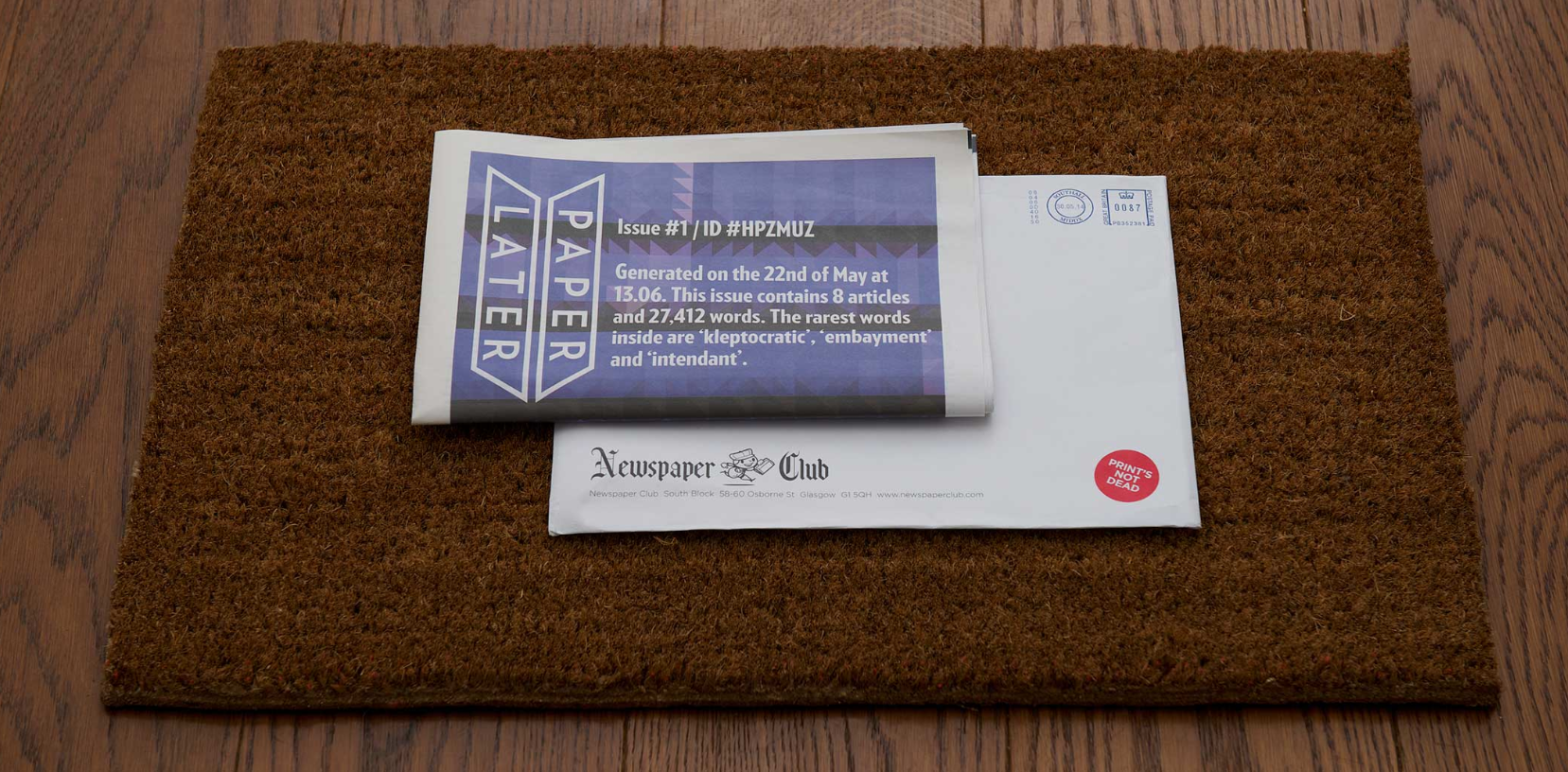
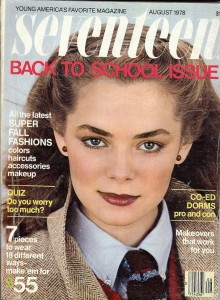
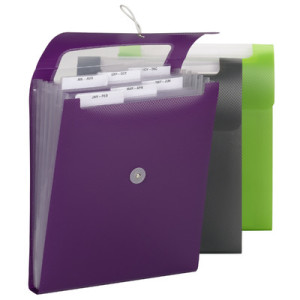
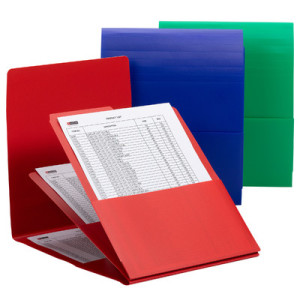
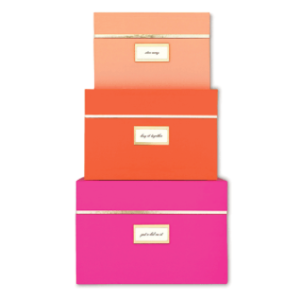
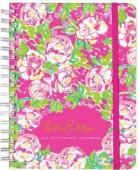
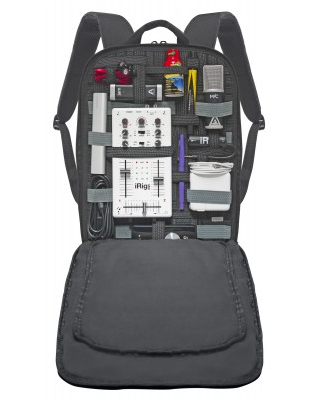
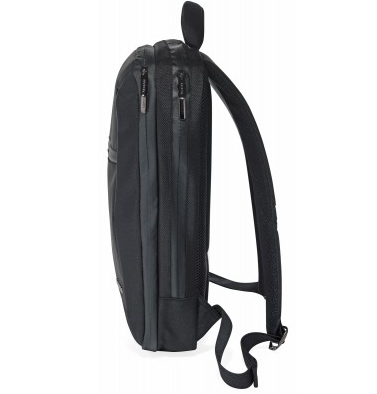
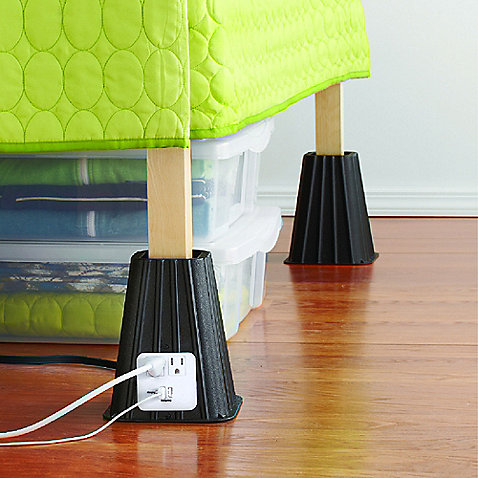
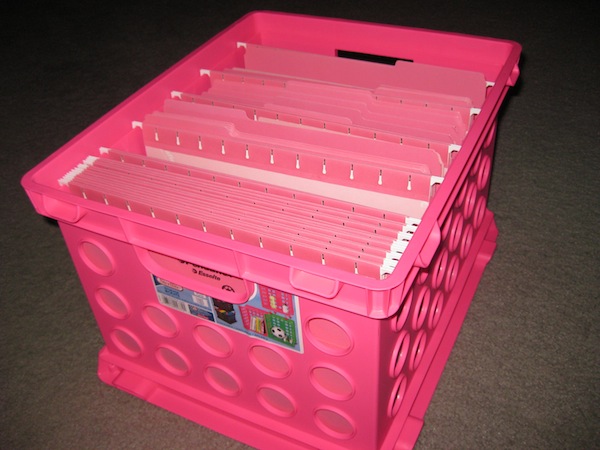
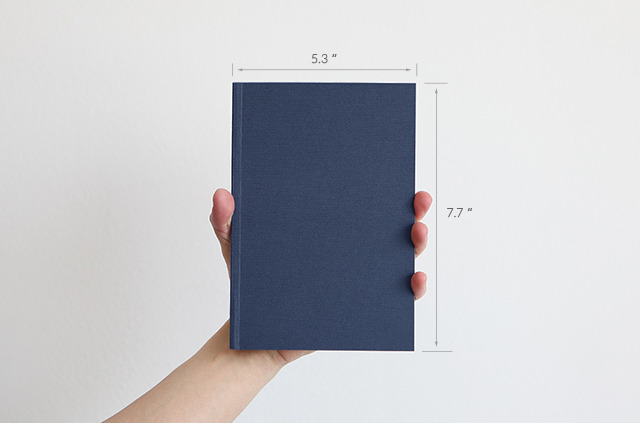
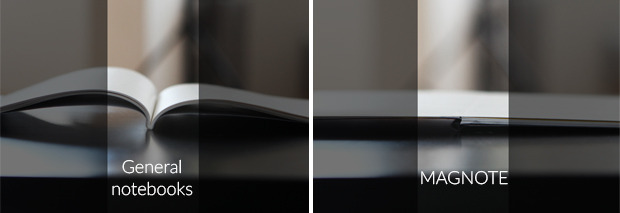
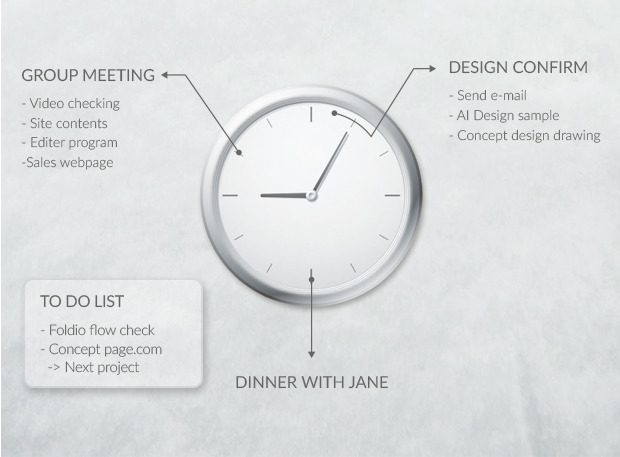
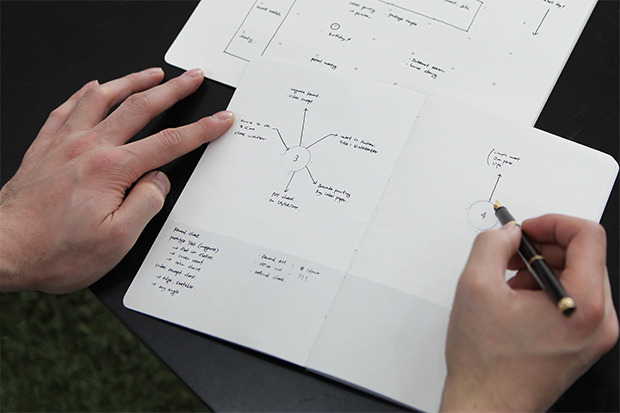
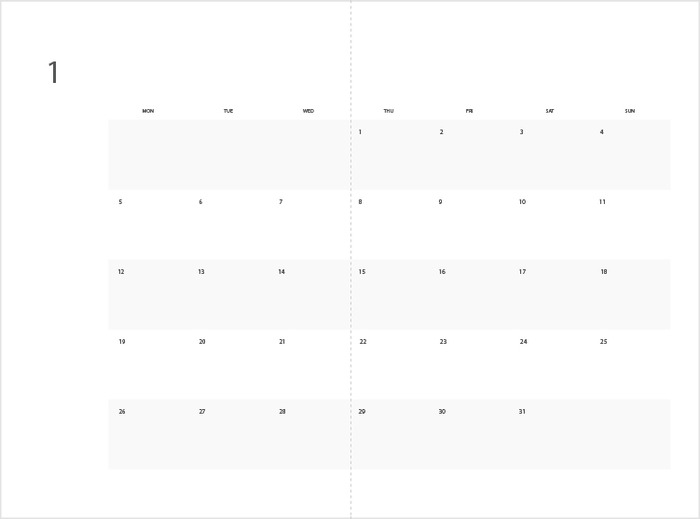
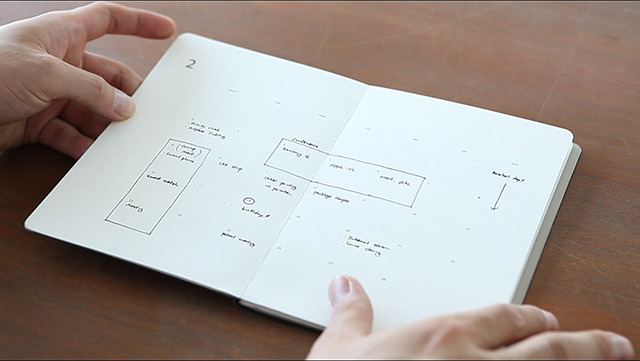
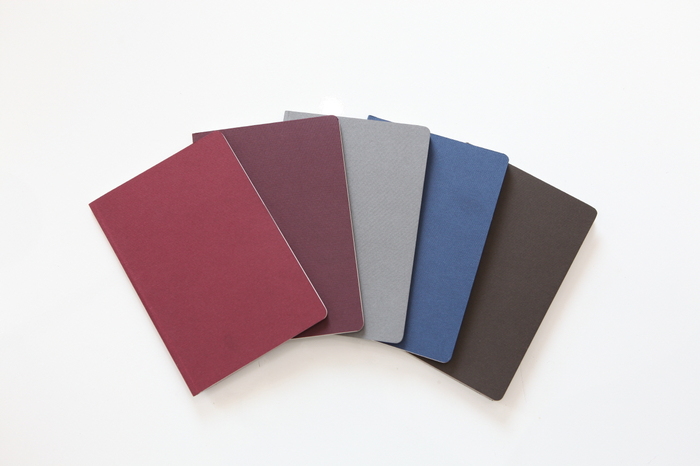
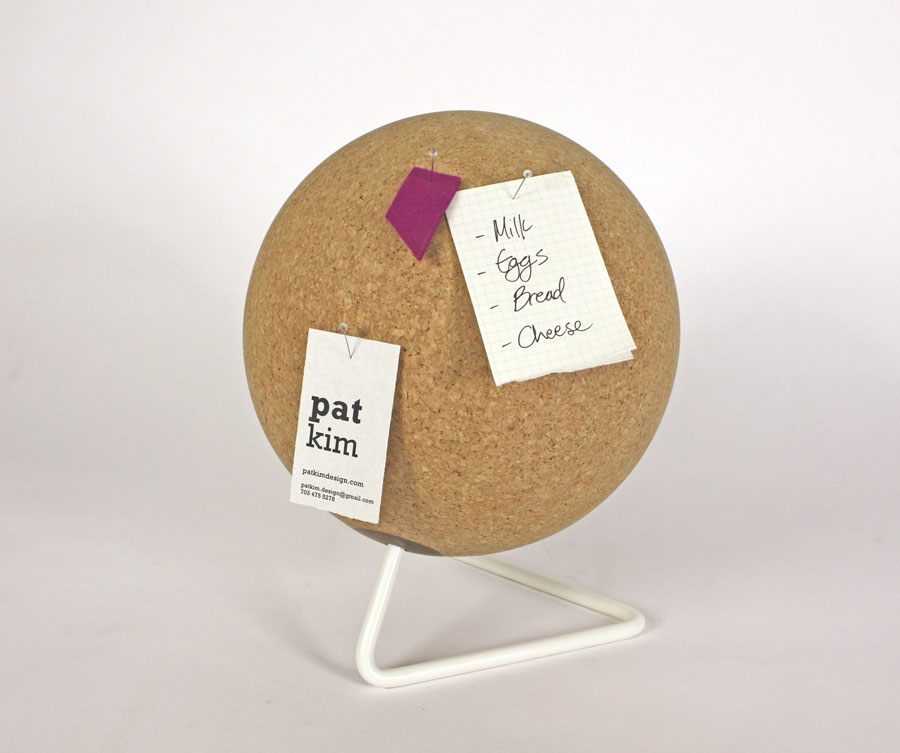
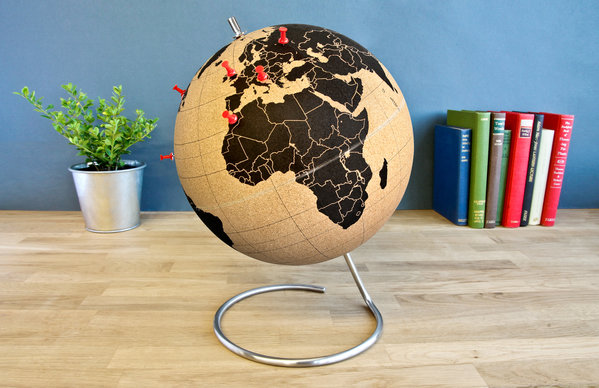
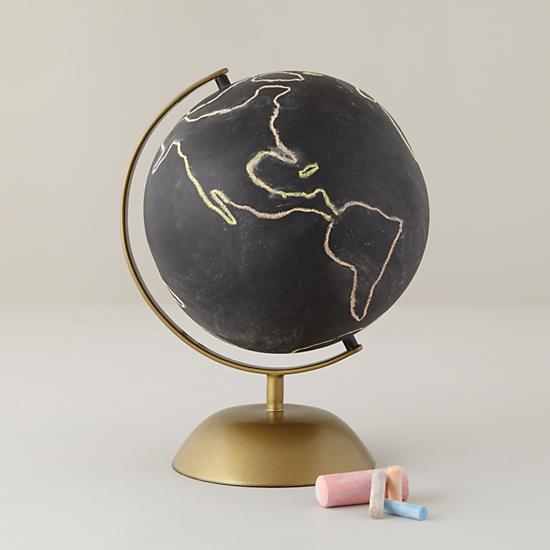
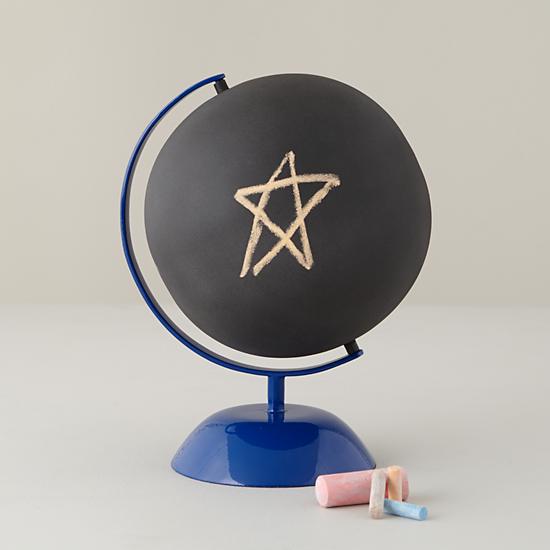
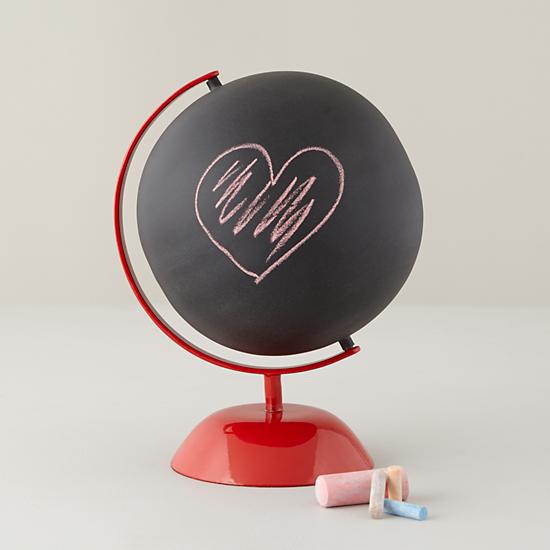



Follow Me